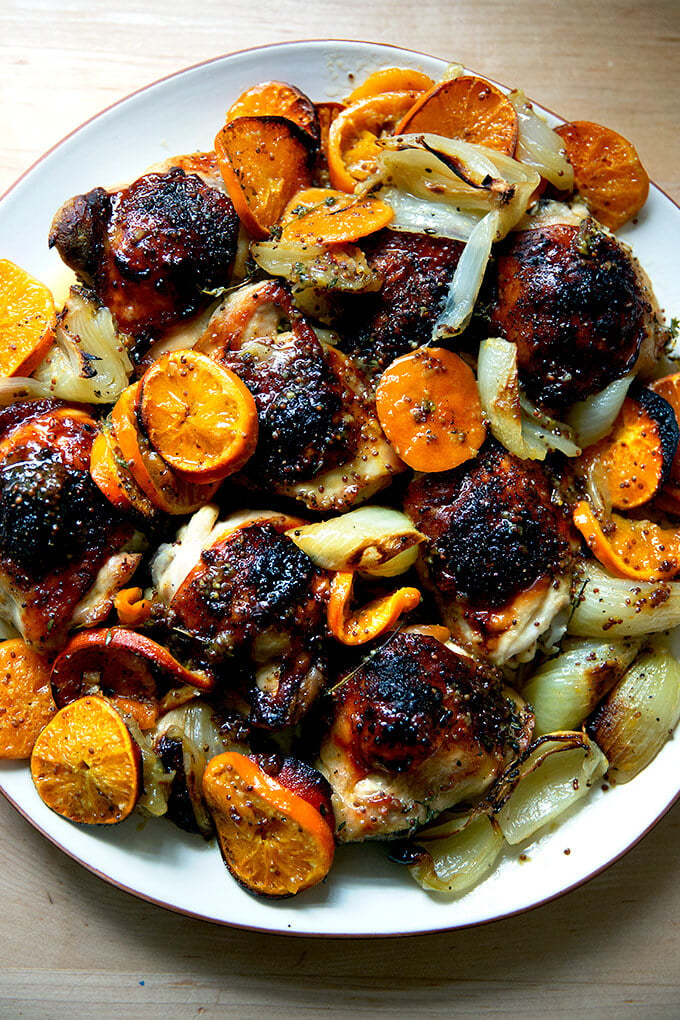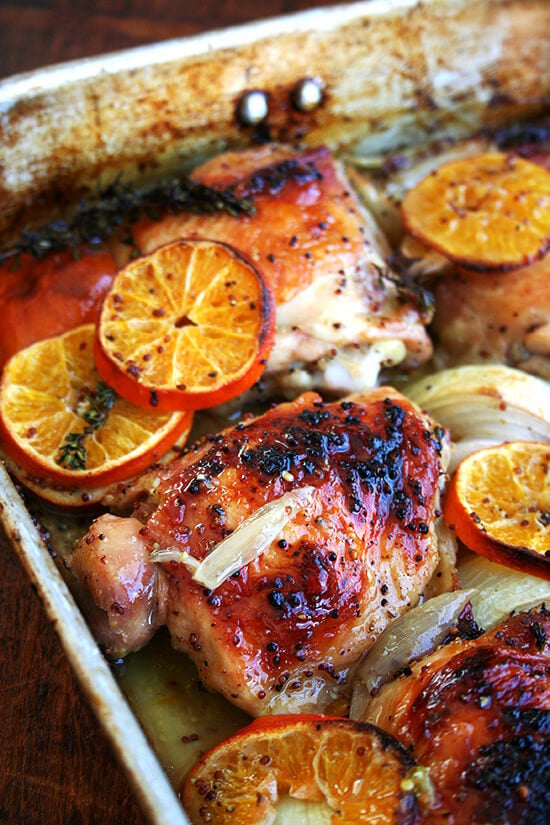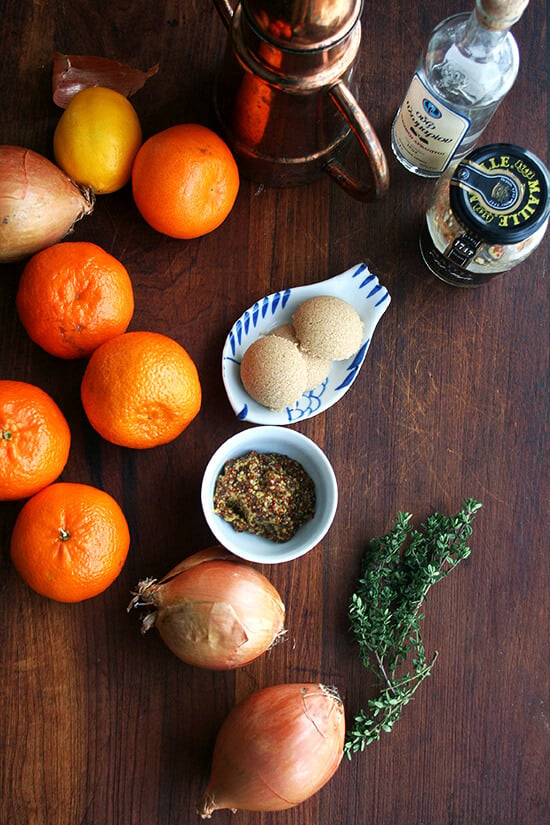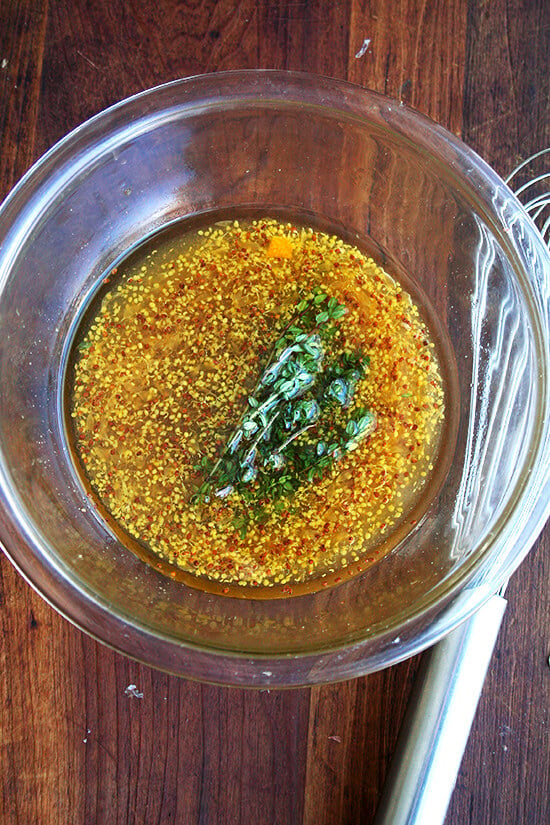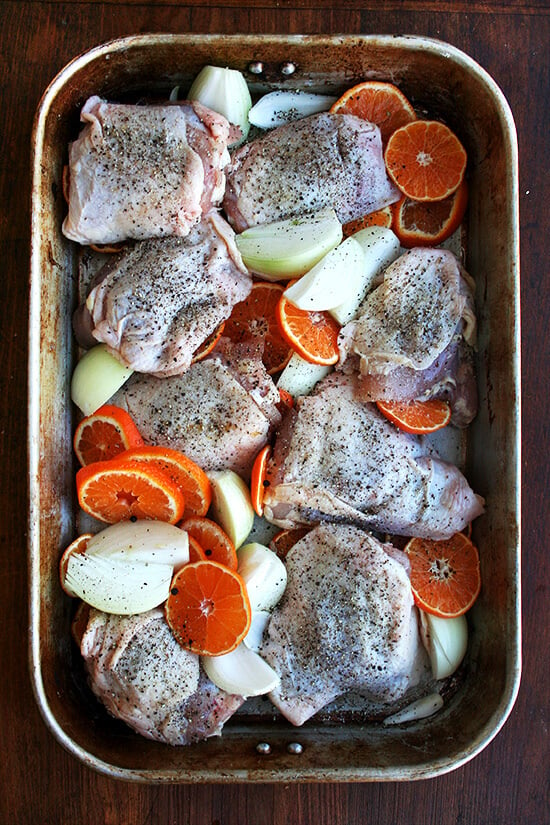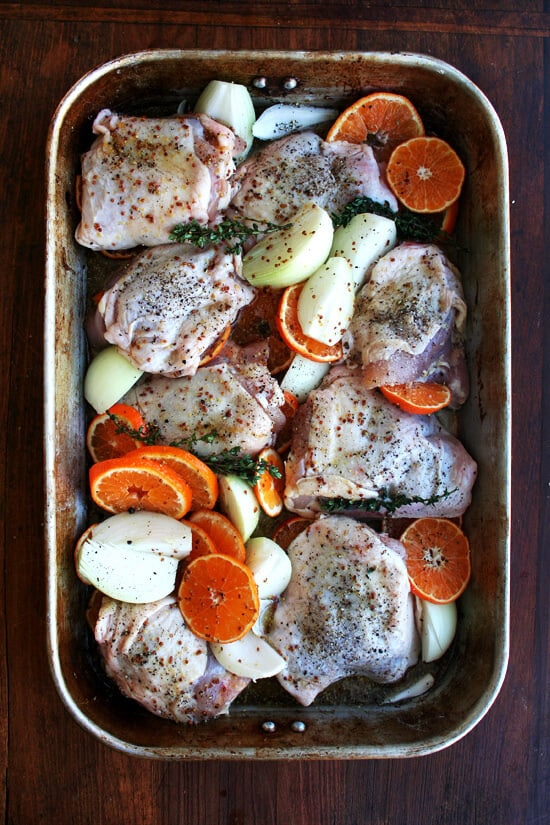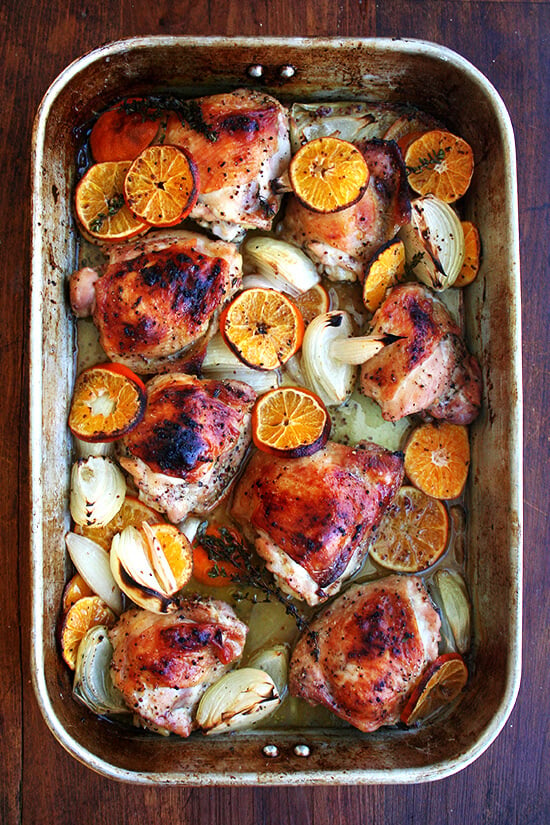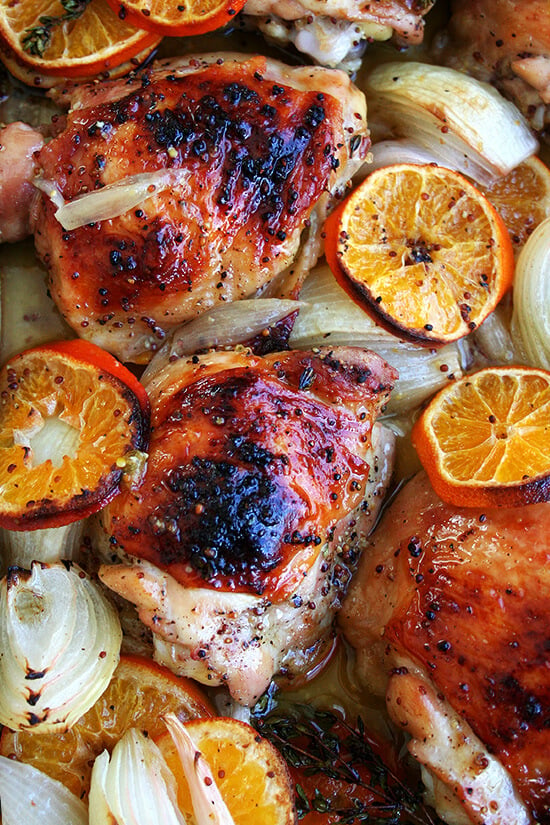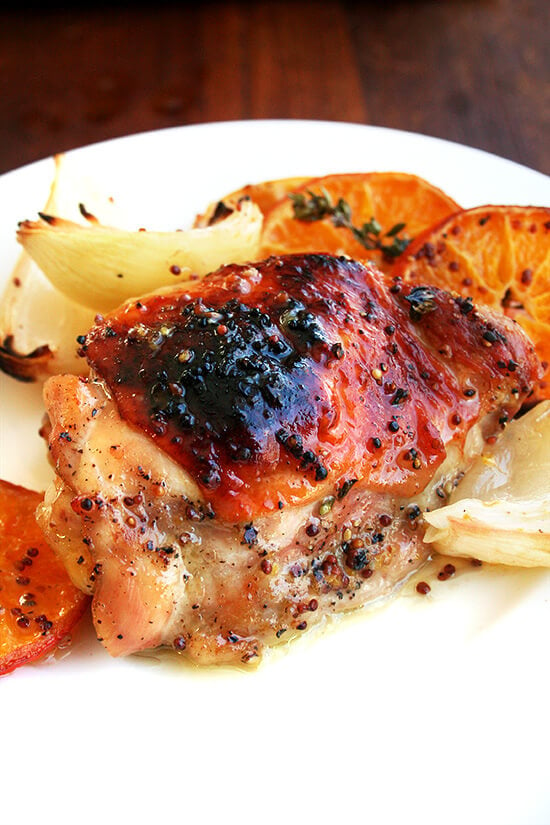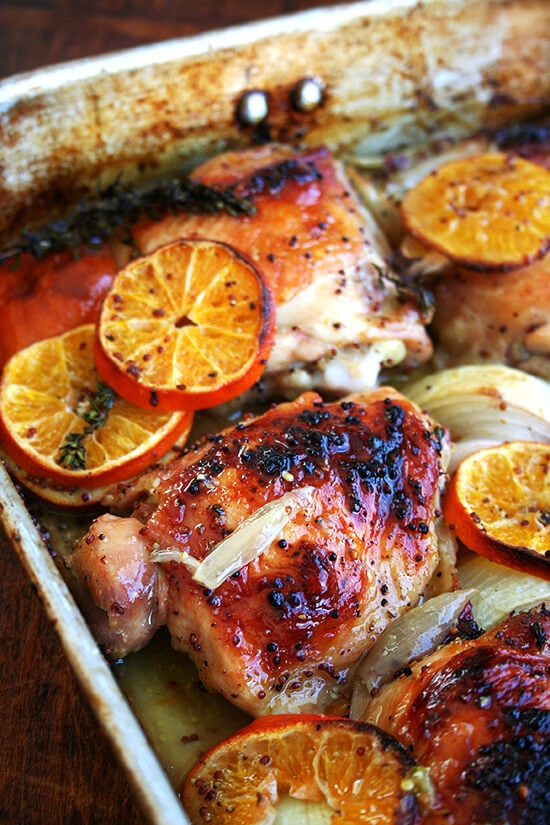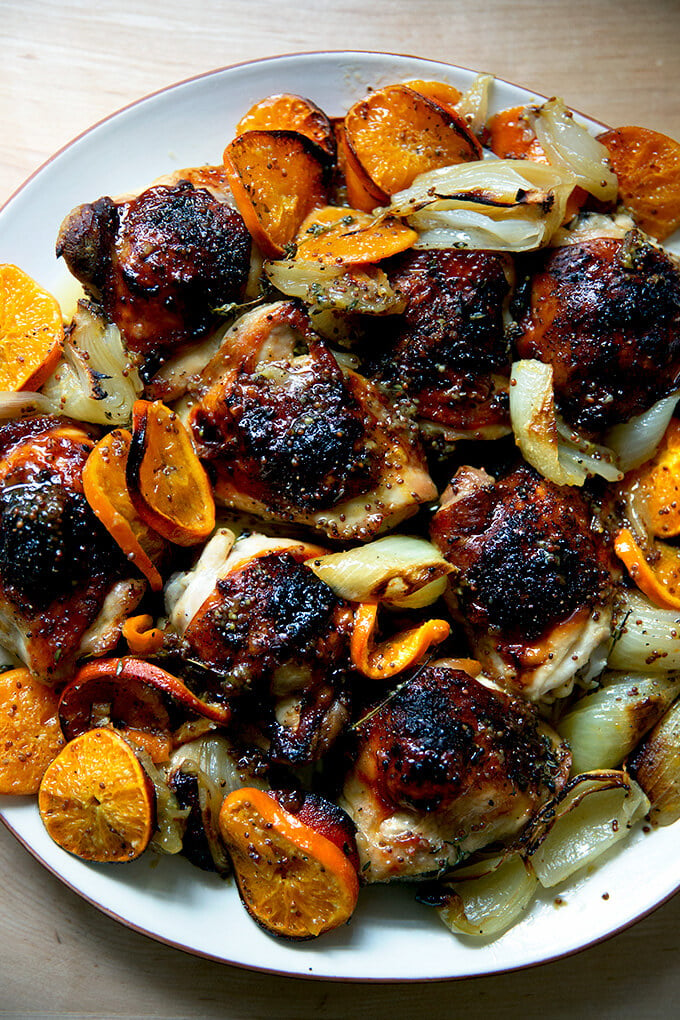Upon receiving Jerusalem early last summer, I poured through it cover to cover, reading about hummus wars and baba ghanoush, feeling inspired to start burning eggplants and preserving lemons with every turn of the page. Six months later I’m only just enjoying my first taste of the cookbook: roast chicken with clementines, a recipe my mother has been urging me to make since the start of citrus season. This recipe calls for high heat — 475ºF — for a long time — just under an hour — which allows the chicken skin to brown and the vegetables to caramelize beautifully. The liquid, a mixture of freshly squeezed citrus juice and some sort of anise-flavored liqueur (Arak, Ouzo or Pernod), keeps the chicken meat incredibly juicy below its crispy skin. (Update: I always use white wine for simplicity.) Ottolenghi and Tamimi, the authors, note in the preface to the recipe, this is a “sweetly comforting dish you will always want to come back to” and suggest serving it with plain rice or bulgur. For me, the volume of slightly sweet, mustard-seed laced juices pooling below the chicken demands lots of crusty bread. This dish is festive and colorful, and with clementine season in full swing, there couldn’t be a better time to get it on your table. Hope you love it as much as I do.
How to Make Roast Chicken and Clementines
Gather your ingredients: Stir together a simple sauce: Combine everything in a large roasting pan: Transfer to the oven for about an hour. It’s done when the skin is crisp and caramelized, and the meat is nearly falling off the bone: 5 from 25 reviews Feel free to take liberties with the ingredients here. I now make this with 1/3 cup clementine juice (versus 3 tablespoons orange juice and 3 tablespoons lemon juice), which works just fine. The original recipe called for fennel bulbs but I prefer onions, and I have also used leeks in place of the onions. The original recipe also called for fennel seed, which I omit, and anise-flavored liqueur, but I now use white wine. So, essentially (and unintentionally!) I’ve removed all three of the anise-flavored components to this dish. The key is to use a large enough roasting pan that allows space between each piece of chicken. If the chicken is crowded together it won’t brown properly. Marinating overnight is not necessary though it’s nice to know that you can assemble this dish ahead of time. Also, the clementine pieces are edible! Some of them are tastier than others — the ones that are exposed (above the juices during the roasting) crisp up and can taste a little bitter; the ones that remain under the juices during the entire cooking process, however, are soft and delicious. You can be strategic and place more of the orange slices beneath the chicken so that they are protected, but I would leave some of them exposed, because they look so pretty when they get a bit caramelized. (I also don’t mind when the oranges are a bit bitter/crisp.)
